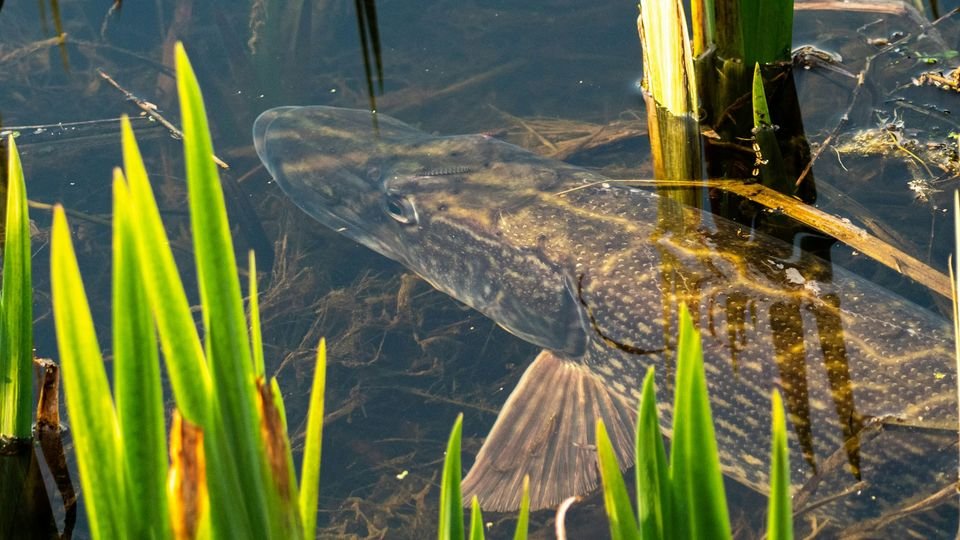In the vast, icy wilderness of Alaska, where nature’s rhythms unfold with unwavering precision, an unassuming fish, the northern pike, embarks on an extraordinary journey to expand its dominion. Like a conquistador venturing into uncharted territory, the pike navigates a labyrinth of marine corridors, carving out new frontiers, forging connections, and leaving an indelible mark on the Alaskan landscape.
Pikes Arctic Odyssey: Unraveling the Enigma of Colonization in Northern Alaska
Pike use marine corridors to colonize new Alaska territory
Researchers have discovered that lake-bound northern pike are using marine waters to travel between freshwater habitats, leading to the colonization of new territories in northern Alaska. the study, published in the journal “Ecology and Evolution”, provides the first evidence of marine migration by this species. Through a combination of field surveys, and genetic and isotopic analysis, the team found that pike were using marine corridors to expand their range, highlighting the importance of marine connectivity in shaping the distribution of freshwater fish species in the Arctic.
Unveiling the Hidden Pathways: Marine Corridors as Gateways to New Territories
Pike use marine corridors to colonize new Alaska territory
Marine corridors are often thought of as watery highways,connecting different bodies of water and allowing marine life to move freely between them.But a new study shows that these corridors can also serve as gateways to new territories, allowing species to colonize new areas and expand their ranges. The study, published in the journal Ecology, tracked the movements of pike in Alaska’s Cook Inlet. The researchers found that pike were able to use marine corridors to colonize new tributaries and establish new populations. This suggests that marine corridors may play an vital role in the dispersal of fish species, and could be a factor in the spread of invasive species.
Leveraging Telemetry Data: Tracking the movements of Northern Pike
Through telemetry we have learned that northern pike colonize new Alaskan watersheds by travelling through marine corridors. Actually,our extensive acoustic array documented 14 coastal migrations of >15 km by northern pike,emphasizing the importance of connectivity between saltwater and freshwater habitats. Remarkably, some pike remained in estuaries for up to 100 days, taking advantage of access to marine prey, before ultimately moving into freshwater systems and proceeding to colonize newly available habitats.
Preserving Pike Habitat: Recommendations for Sustainable Colonization
Conservation Efforts:
To ensure the sustainable colonization of northern pike in Alaska, several recommendations are necessary:
Designated Marine Corridors: Establish designated marine corridors to facilitate northern pike movement between rivers and estuaries, minimizing habitat fragmentation and promoting genetic connectivity.
Habitat Restoration: Restore degraded marine and estuarine habitats through reforestation,wetlands protection,and sediment control measures to enhance food availability and provide shelter for pike.
Limiting Harvesting: Implement sustainable fishing practices to prevent over-exploitation and maintain healthy prey populations for northern pike.
Monitoring and Research: Conduct ongoing monitoring and research to track pike populations, identify critical habitats, and evaluate the efficacy of conservation measures.
* Community Engagement: Engage local communities in conservation efforts through outreach programs, education campaigns, and participatory monitoring to raise awareness and foster stewardship.
By implementing these recommendations, we can preserve the marine habitats essential for triumphant northern pike colonization, supporting their expansion into new territories while maintaining the health of the broader ecosystem.
In retrospect
As the northernmost marine predators, pikes continue to carve their path across the vast Alaskan frontier, leaving behind a trail of genetic connections that whisper of their relentless colonization journey. Like seafaring explorers of old, they navigate the labyrinthine marine corridors, charting new territories and expanding their empire with each generation. And as the icy grip of Alaska’s wilderness gradually loosens, the pikes stand ready to seize their destiny, their future painted not on a map, but on the living canvas of an ever-evolving ecosystem.
